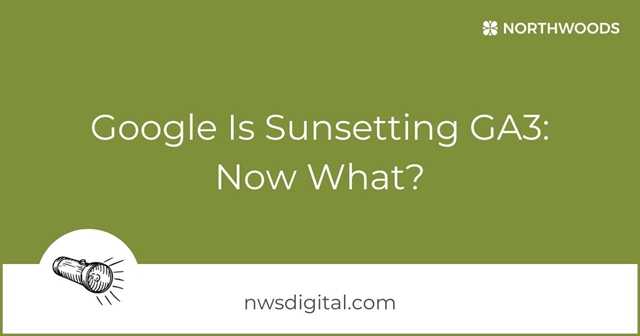By Alex Boston
June 12, 2023
5 Minute Read
The sophistication of the ChatGPT AI learning model, released in November of 2022, surprised people. It suddenly forced programmers, marketers, and educators to imagine an AI-led future, for better or worse. Other generative AI followed in ChatGPT’s wake. Exciting, no? What wonderful things could this emergent technology do for us?
Soon enough, waves of doubt and fear (justified, I think) swept through the creative community. AI models have taken to fiction writing, visual arts, and design in recent years. Here’s ChatGPT taking a stab at the prompt “Write a sonnet in the style of Shakespeare on the topic of falling in love”:
When Cupid's arrow doth its mark find true,
And two hearts beat as one in sweet embrace,
A tale of love begins, forever new,
With joys and fears in this enchanted space.
Like star-crossed souls, we dance upon life's stage,
In rapturous bliss, our spirits intertwine,
As passion's fire ignites with fervent rage,
Our love's foundation sturdy, strong, and fine.
Each word exchanged, a sonnet's gentle rhyme,
Each touch, a verse that stirs the deepest core,
In every stolen glance, a pantomime,
We're bound together, now and evermore.
Thus, love's sweet madness leads us on this path,
In Shakespearean style, our hearts shall bask.
This demonstrates the sort of thing AI writers can deliver. It is technically fine. It’s in iambic pentameter (mostly). It has 14 lines and some archaic-sounding language. It understands how to piece the components of language together and what makes a sonnet. It sounds vaguely “Shakespearean.”
But it doesn’t really know what to do with those components, or at least how to make anything more than a dull, referential, and sometimes nonsensical rehash of what it’s already seen. Words like “star-crossed” are misused, some lines are utter gibberish, and rhyming “path” with “bask” stretches assonance to its limits.
And yet, ChatGPT generated that sonnet in about 12 seconds. That’s impressive. And that’s where ChatGPT comes in handy.
As someone who’s spent significant time working with ChatGPT, I’m happy to say that we aren’t living in a post-author future – yet. AI models are nowhere close to replacing human writers.
But AI can be incredibly useful in certain phases of the writing process. ChatGPT and models like it can save you significant time researching, outlining, and even spinning up first drafts of blogs and other short pieces.
Blog Writing with ChatGPT
Asking for a robot’s poetic musings on love may not be the most useful application of ChatGPT. But for simpler writing like branded blog articles, it has a lot to offer. The right prompt can make great use of the model’s capabilities. If nothing else, it can deliver some preliminary ideas and a frame for a blog article – raw material that you can revise into something more human.
These tips will help you get the most out of ChatGPT and other AI learning models as you write blog articles, even keyword-focused ones.
Use Specific Prompts to Get What You Want
The more descriptive you can be regarding such structural parameters as voice, length, and overall format, the closer ChatGPT can come to producing what you want. Its breadth of knowledge is surprising. It responds to vague criteria like “Write in a conversational tone” and specifics like word counts.
Simple and concise prompts are important, but you don’t have to stick to one sentence. The more qualifiers you can add, the better. If you have ideas about how to structure the article, you can include those, as well. A solid, descriptive prompt might look something like:
“Write an article listing and providing information on the benefits of regular exercise. Begin with a brief introduction. Provide the benefits of exercise in a list format. Include 3-4 sentences of detailed information for each list item. Write in a conversational, informal voice. Length 600 words or more.”
AI often doesn’t nail it on the first pass. Again, our goal isn’t to coach the AI model to produce a finished article. It’s to create a starting point and relieve you of the duty of staring at a blank screen while you try to conjure up that first sentence. A specific enough prompt can lead to less effort on your part to shape the text into something usable. The great thing about ChatGPT is that you can ask follow-up questions and refine your results in “conversation” with the tool.
Define the AI’s Perspective and Style
When prompted, ChatGPT can approach text from a designated, practical perspective. Try prompts such as “Act as an editor and review the text below for grammatical errors.”
Use it to generate ideas, such as: “Act as an interviewer and create questions for an expert on the topic of R&B in the 1990s.” This can be useful to both generate questions and gather research, as ChatGPT will use this prompt to script out both sides of the conversation. The conversation will be stiff, mechanical, and deeply awkward – but sometimes they provide usable ideas.
As our sonnet demonstrated, ChatGPT can respond to stylistic parameters. If there’s a voice, style, or form that you’re looking to emulate, include this in your prompt.
Write Some Sample Text and Let AI Elaborate
I use the sample text feature a great deal. Prepare a short passage, typically introductory text or something that encapsulates the overall topic, and prompt ChatGPT with: “Take the following text and expand on it.” The AI will use its substantial language database to recognize and match the key elements of your text and generate additional copy on the topic based on that.
Even if it doesn’t produce exactly what you’re looking for, the AI might surprise you in good ways as it expands on your work. Again, if it does nothing but provide a helpful road map for topics to cover, or useful information pulled from ChatGPT’s knowledge database, it’s still saved you some time.
Make Text More Readable
The prompt “Make this text easier to read: [text]” can be a quick and easy way to revise text for readability. ChatGPT can reference readability indices, such as Flesch-Kincaid, to refine your text. It can simplify and streamline copy.
Such uses fit ChatGPT perfectly. Flesch-Kincaid and other readability tools are very straightforward and based on simple formulas. AI can quickly apply those formulas to text. The results probably won’t be the smoothest, most human writing you’ve ever read, but the AI-created draft can provide the clay that awaits a human touch.
If you need digital strategy, digital marketing or advertising, or content development support, don’t hesitate to reach out. Our expert strategists and digital marketers can help you achieve your goals!
Related Blog Posts

AI-powered tools are giving marketers new ways to streamline writing and create efficiencies. Should blog writing be one of them? Here's our take.

How can marketers and business owners convey their messages – especially complex ones – to distracted internet users in an overwhelmingly noisy environment? These four tips will help you stand out.

As of July 1, 2023, Universal Analytics (UA), also called GA3, will no longer accept any incoming traffic. What does that mean, though, and what should you do? Here’s a high-level outline of the steps you need to take to ensure continuity in your analytics.